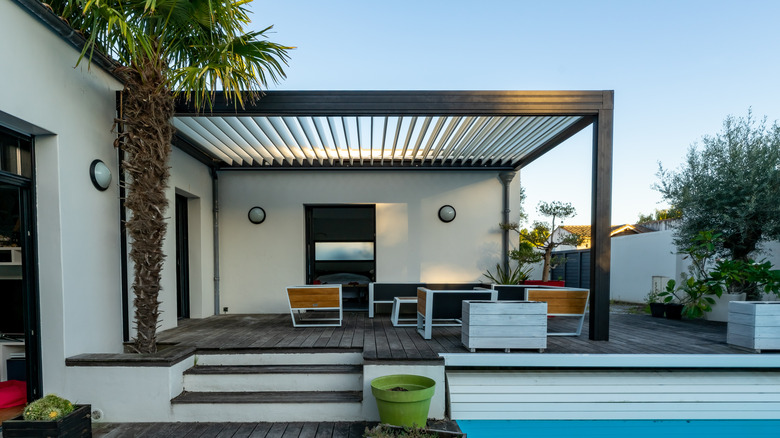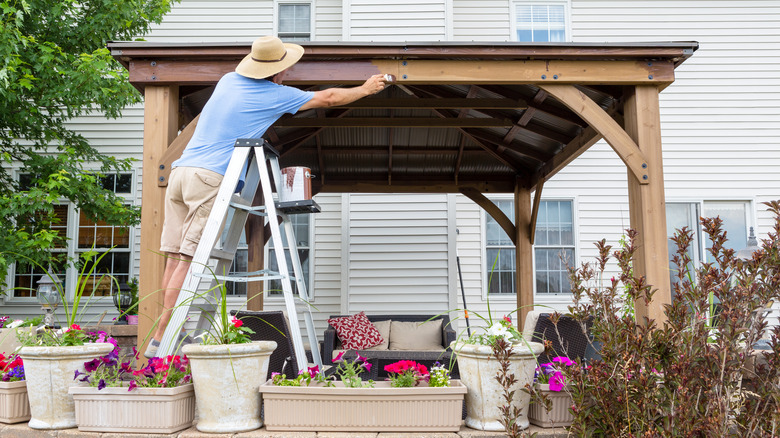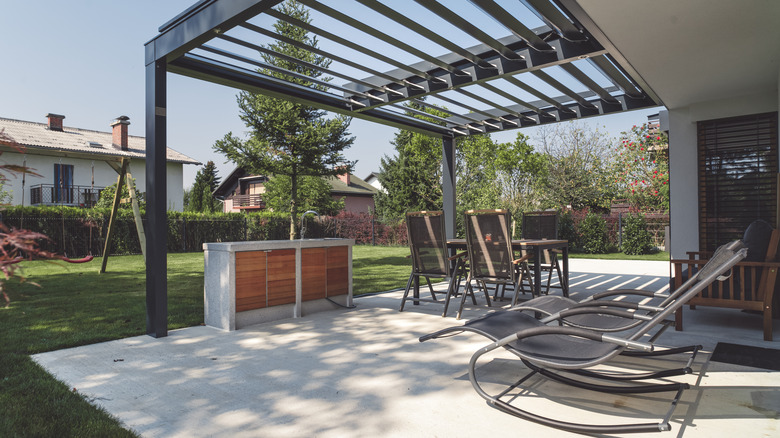How To Choose The Right Pergola Material For Your Yard
If you want to transform your yard into a fashionable getaway, consider installing a pergola. These structures are built from vertical pillars or columns that hold up horizontal beams, creating an open lattice or framework. They can be a stunning focal point in your backyard, adding style and utility with the right material. While some are standalone, others can be attached to the property. And although a pergola's primary function is to offer shade, it may also improve the aesthetics of your outdoor space. As a result, considering the style of the material is vital.
But how can you pick the most resilient material that blends well with the design of your residence? The solution isn't always obvious and typically depends on your preferences and style. Pergolas are typically made of wood, stone, fiberglass, and various other materials, including metal. To ensure a sturdy, attractive, and practical structure, it is crucial to consider several aspects, such as your local climate, because different weather conditions can affect how well structures made of wood, vinyl, and metal perform. Second, look at your budget because costs will greatly impact your decision. Third, consider how much upkeep each material requires. Remember that your choice will also impact the structure's durability, so it's essential to be aware of the benefits and drawbacks of each option.
Different types of wooden pergolas
Wood is a natural substance that offers coziness, texture, and personality. Using it to construct your pergolas can help create an appealing design that is perfect for your outdoor space. If you prefer a more classic or rustic appearance, it can produce a natural charm that is difficult to replicate with synthetic materials. You can also paint wood pergolas as an additional customization option to obtain your desired look. Furthermore, it is a versatile material that can be easily carved, allowing you to be creative with the design and style.
Cedar, redwood, and Douglas fir are among the several varieties available. Cedar weathers well and is resistant to rot, moisture, and pests, making it a long-lasting choice. Redwood is an excellent alternative to cedar and has a sub-variant known as Western red cedar that is ideal for pergolas due to its longevity and beauty. Lastly, Douglas fir is more affordable than cedar or redwood but may require more upkeep to prevent rot and insect damage. However, if properly maintained, Douglas fir can also be an attractive and long-lasting choice.
Metal and artificial alternatives
Aluminum is lightweight and resilient, making it a durable choice for building a pergola. It is also corrosion-resistant, which is great for those who live in an area with high humidity. This material requires little upkeep and is available in various colors and finishes, allowing you to easily complement your outdoor design. The main downside to aluminum is that learning how to work with it may take time, especially if you're more accustomed to building with wood. Vinyl is another material that is also resistant to all weather conditions and is available in various colors and styles. They are, nevertheless, adaptable enough if you desire a simple, low-maintenance construction. However, one disadvantage of vinyl is that it does not have the same natural look and feel as wood, nor can it be painted. It is also one of the more costly pergola material options.
Outdoor structures made of fiberglass are sturdy, light, and corrosion and rust-resistant. They require little care and can be painted to fit your outdoor décor. Because of its durability and low maintenance needs, fiberglass can be a good investment. The final material on this list is steel, a durable option ideal for larger designs or windy areas. However, steel is prone to rust. Therefore, it might be best to use stainless or galvanized steel to strengthen resistance.


